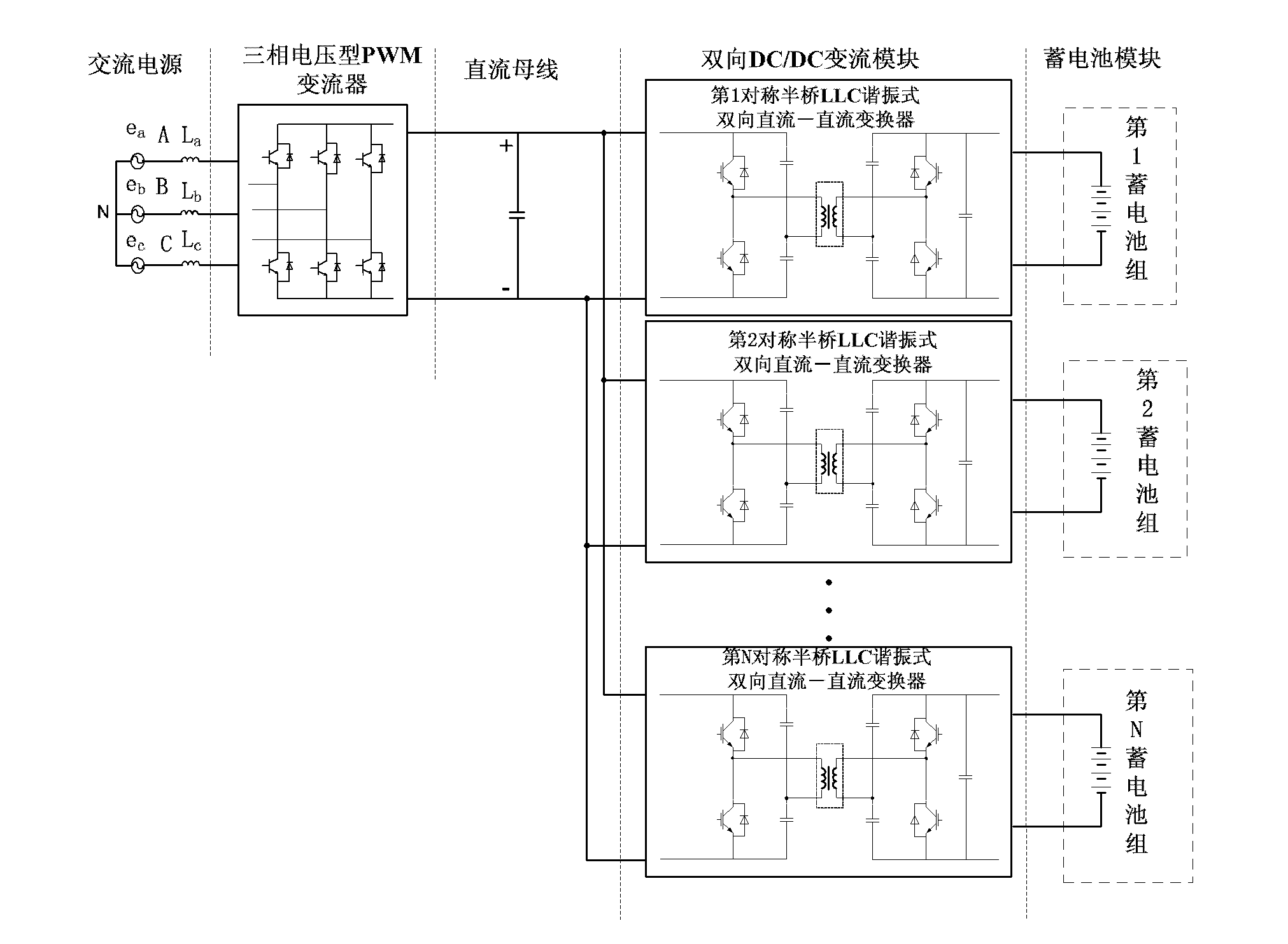Storage battery reduction charge-discharge converter circuit
A technology for charging and discharging batteries, applied in the field of battery formation, can solve the problems of uncontrollable, difficult to detect, and high cost, and achieve the effects of reducing volume and weight, improving conversion efficiency, and reducing working pressure
- Summary
- Abstract
- Description
- Claims
- Application Information
AI Technical Summary
Problems solved by technology
Method used
Image
Examples
Embodiment Construction
[0035] The present invention will be described in further detail below in conjunction with the accompanying drawings.
[0036] Such as figure 1 As shown, the present invention discloses a charge-discharge conversion circuit for accumulators, using a three-phase voltage-type PWM converter as the first-stage power conversion circuit to realize energy conversion between the AC power grid and the public DC bus, referred to as "AC / DC primary conversion"; a symmetrical half-bridge LLC resonant bidirectional DC-DC converter is used as the second-stage power conversion circuit to realize energy conversion between the public DC bus and the battery pack, referred to as "DC / DC secondary conversion" ;
[0037] The structure of the battery charging and discharging converter circuit is as follows: AC power supply, three-phase voltage type PWM converter, DC bus, bidirectional DC / DC converter module and battery module are connected in series;
[0038] The bidirectional DC / DC converter modu...
PUM
 Login to View More
Login to View More Abstract
Description
Claims
Application Information
 Login to View More
Login to View More - R&D
- Intellectual Property
- Life Sciences
- Materials
- Tech Scout
- Unparalleled Data Quality
- Higher Quality Content
- 60% Fewer Hallucinations
Browse by: Latest US Patents, China's latest patents, Technical Efficacy Thesaurus, Application Domain, Technology Topic, Popular Technical Reports.
© 2025 PatSnap. All rights reserved.Legal|Privacy policy|Modern Slavery Act Transparency Statement|Sitemap|About US| Contact US: help@patsnap.com



